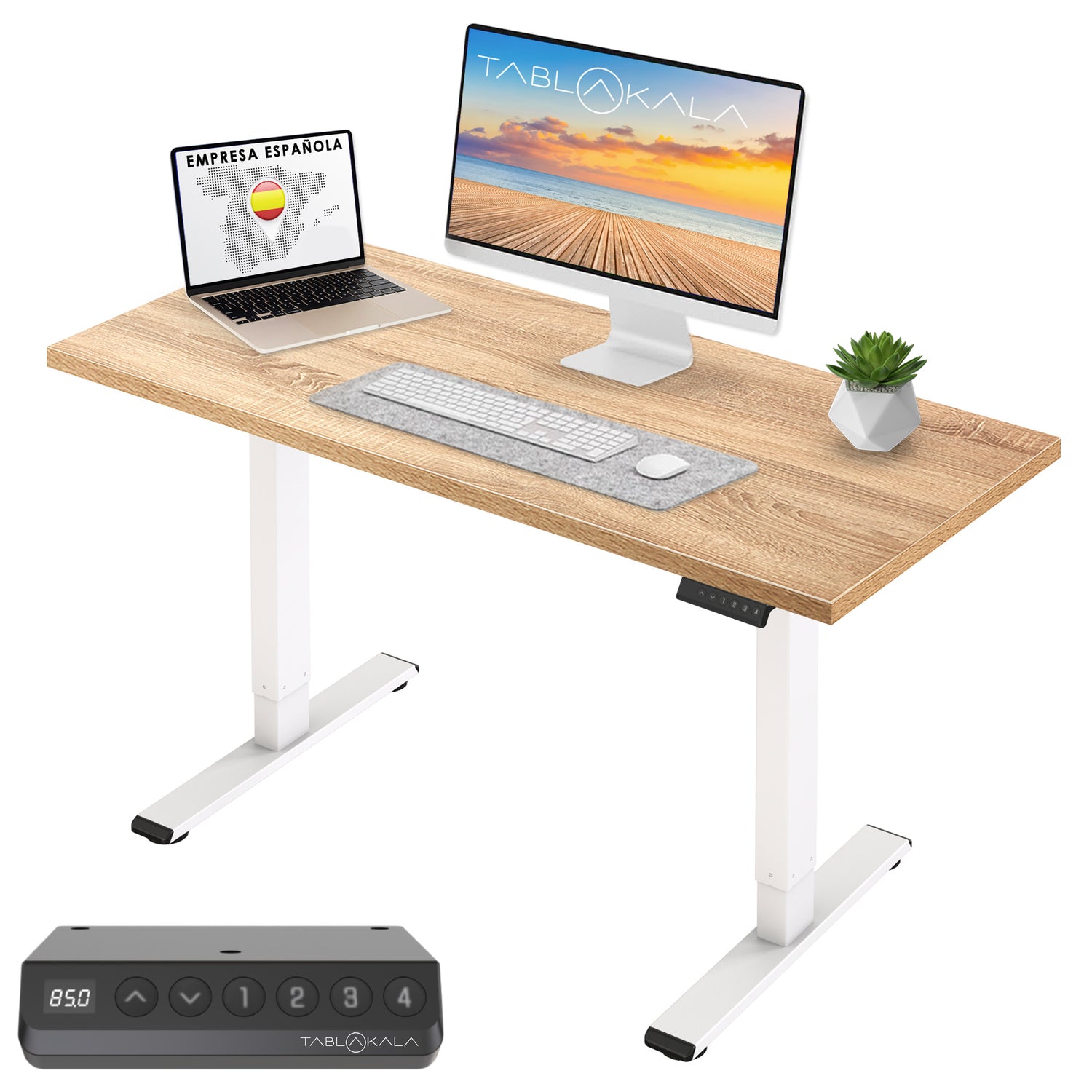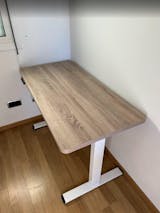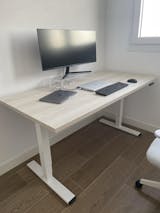We've all been there.
Every now and then, you feel burned out or tired of your job. It's repetitive. You spend 8, 10, 12 hours a day staring at the same screen.
Your back hurts a lot. And you look bad physically because you lead a rather sedentary lifestyle, exercising less than you'd like.
We're not saying we think this every day, or at all hours of the day, but we've all had work days like this from time to time. It's normal.
Today, there are countless options to improve your workspace, where you spend a good part of your day.
One of these options is the standing desk : height-adjustable desk tables that allow you to alternate between sitting and standing.
Why would you want to alternate between sitting and standing? The answer is simple: these posture changes will help you in two ways: on the one hand, they'll help you improve your health. And on the other, they'll help you improve your productivity.
Improve your health with a standing desk
We could start listing countless academic studies here that support this idea, but let's try to explain it more simply.
Many of today's office jobs require people to spend excessive amounts of time sitting in front of their computers, which has negative consequences for their health.
On the one hand, this pushes you towards a sedentary lifestyle, in which your body spends a good part of the day sitting, with little movement and little exercise, which tends to be a vicious cycle (since the less you move and the less exercise you do, the more effort it takes to move).
On the other hand, by staying in the same position for a long time, you tend to put stress on certain areas of your body, such as your back (especially your lower back or upper trapezius muscles) and other joints like your knees, hips, or wrists.
A Tablakala standing desk won't completely change your health, but it can easily allow you to change your posture (alternating between sitting for a while and standing for a while). This will help you be a little less sedentary in your daily life, help you unconsciously exercise your muscles, and make frequent changes to improve circulation and reduce back and joint pain.
Smart desk to improve your productivity
On the other hand, scientific studies have also shown that frequently changing posture while working (for example, alternating between sitting and standing) increases mental focus and productivity.
If you stop to think about it, it's normal.
Sometimes you realize you're tired, physically or mentally, from the work you're doing at the moment. Little by little, without realizing it, you start to "slump" in your chair, and your mind begins to block and flow less.
In these cases, a change of posture can help. If you find yourself stuck or tired at any given moment, try moving around, taking a few minutes to walk around your office, or if you have a motorized adjustable desk , change your posture to standing.
This change of dynamic can help you unblock the situation and start with renewed ideas.
Likewise: this isn't a magic formula, nor will it make you a highly productive person overnight, but if you incorporate posture changes (alternating between sitting and standing) into your work habits, you're very likely to be more productive in your day-to-day work.

In short, using a height-adjustable desk can help you:
-
Boost your energy level: Working at a standing desk encourages the mobility needed to improve circulation and oxygenate the brain. This increases energy levels and concentration.
-
Improve your mood: Those who spend more than six hours a day sitting show greater signs of stress than those who don't. Alternating between sitting and standing improves your mood and reduces fatigue and tension.
-
Improves joint and muscle movement: Muscle and joint movement to move from sitting to standing helps your health and counteracts a sedentary work routine.
-
Boost your productivity: Working at a standing desk has been shown to increase productivity at work.
-
It helps you burn calories: Standing up burns 12% more calories than sitting, which helps you burn more calories every day and therefore improve your fitness.
-
Develop greater mental focus: Movement while you work encourages concentration and creativity, improving critical thinking and attention.
-
Reduces the risk of disease: A sedentary lifestyle carries health risks. Alternating between standing and sitting is linked to lower rates of heart attack, stroke, and diabetes. It's also highly recommended for improving back pain and discomfort.
-
Reduce your caffeine intake: Standing regularly is a more natural way to stay alert at work than coffee and energy drinks.
And we're done:
3 Tips if this is your first experience with a Standing Desk
1. Start slowly
If you work sitting down, your body is not used to working standing up.
To prevent it from becoming too difficult and demotivating at first, start with short periods of standing for 10-15 minutes (set an alarm!) and stand up 2-3 times a day.
With practice, you can gradually increase to 30-45 minute standing sessions without any problems, and several times a day.

2. Find your ergonomic posture and memorize your heights
Once your desk is set up, find your ergonomic working position, one in which you don't strain any part of your body.
A good starting position is usually with your elbows at 90 degrees and naturally resting on the table, without straining your back or arms, but each person should find their ideal position.
Once you have it, memorize your sitting and standing heights on your desk. This way, you can change the position with a single click.
3. Start your work sessions standing up.
For example, we recommend raising your desk the night before and starting your workday with a standing session.
You can also leave her standing when you take a break for lunch (or a bathroom break), so that when you return you can start a standing session and change the dynamic.
Final Tip: Try combining the Standing Desk with the Pomodoro Technique : 25-minute focused work sessions, separated by 5-minute breaks.





